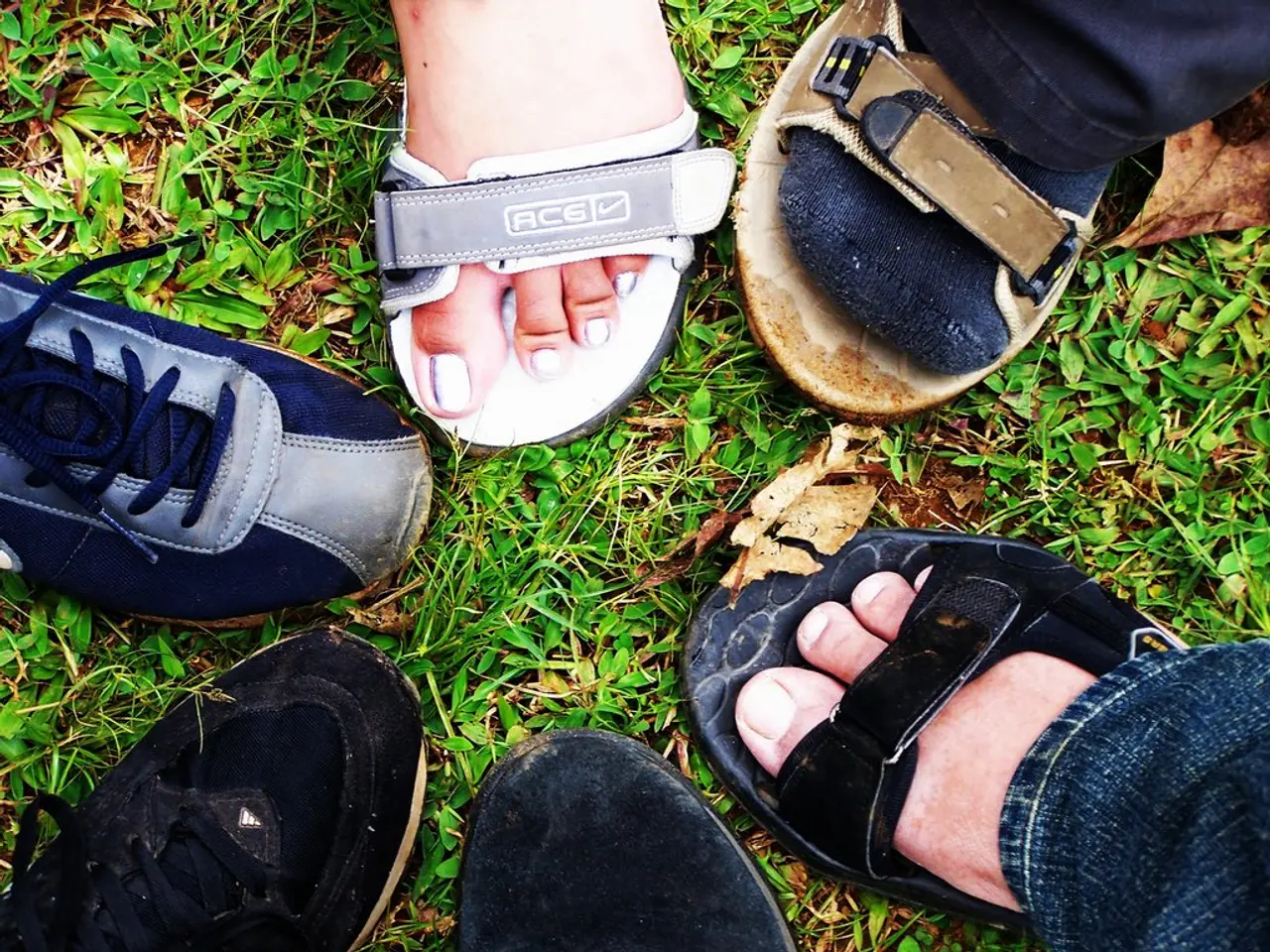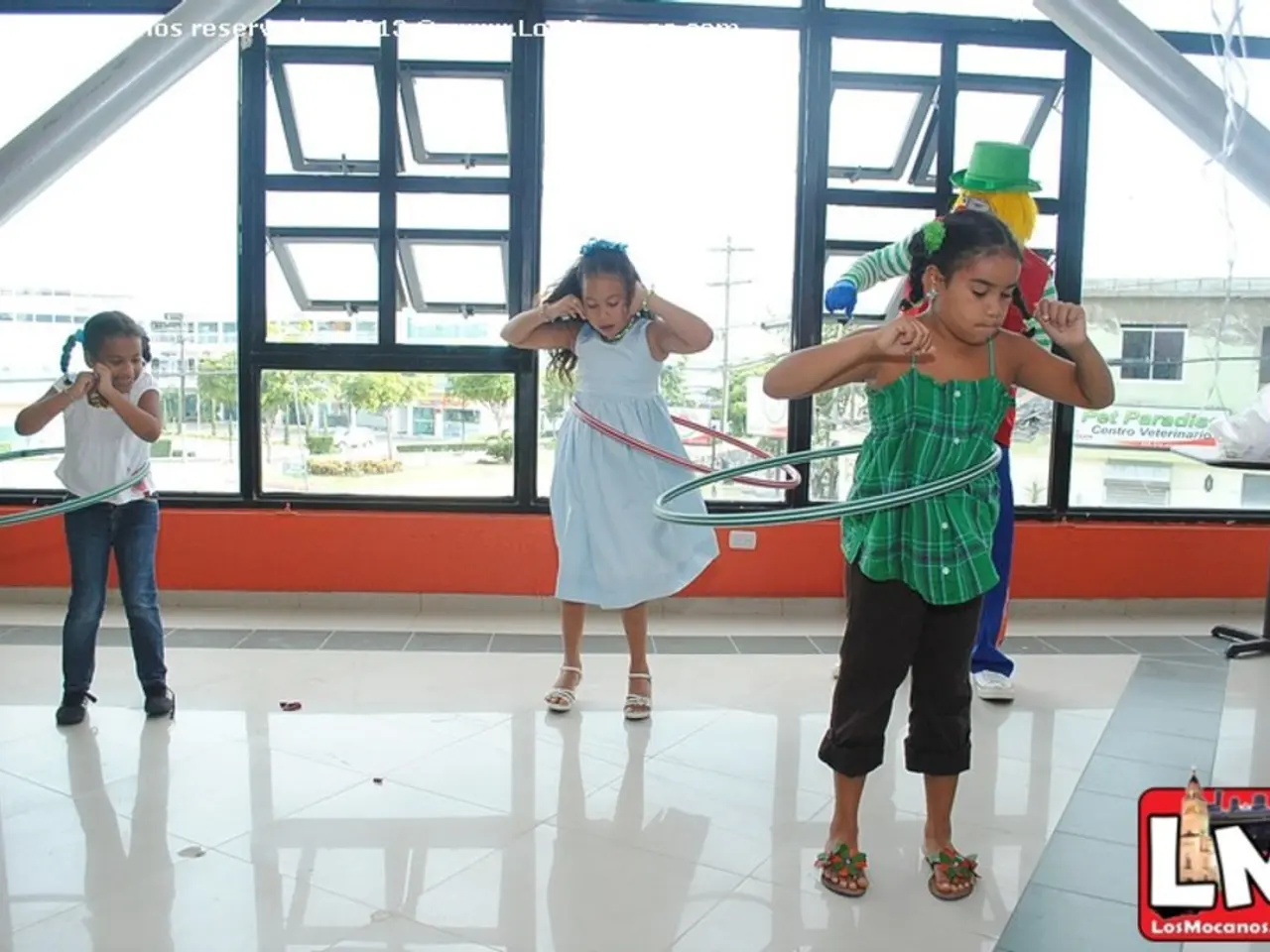Benefits and Drawbacks of Exercising Without Shoes: An Unexpected Insight
Minimalist shoes are gaining popularity among fitness enthusiasts as a safer alternative for those transitioning from regular shoes. These shoes, with their thin soles and minimal cushioning, provide some protection and support while allowing for natural foot movement.
The practice of working out barefoot has also gained traction in the fitness world, with barefoot training shoes specifically designed to mimic the feeling of barefoot workouts while offering some grip and protection. Incorporating barefoot training into a fitness routine can lead to long-term benefits, including stronger foot and lower leg muscles, improved foot arch stability, better balance, and enhanced proprioception (body awareness).
Barefoot training strengthens the often underused muscles in the feet and calves, supporting natural foot structure and arch integrity, potentially reducing injury risk. It encourages a more natural gait pattern, typically promoting midfoot or forefoot striking rather than heel striking, which may lessen impact and joint stress compared to traditional cushioned shoes.
However, it's important to note that barefoot training may not be suitable for everyone, especially those with existing foot pain or structural issues. It should be approached gradually to avoid overuse injuries. The design flaws of conventional shoes—such as heel elevation, narrow toe boxes, and rigid soles—can weaken foot muscles over time; barefoot training helps reverse some of these effects if done carefully.
When it comes to barefoot workouts, the surface on which one exercises plays a crucial role in comfort and safety. Grass, sand, rubber flooring, yoga mats, wood or concrete surfaces require different levels of caution. It's crucial to inspect the workout area for hazards before exercising barefoot.
The vulnerability to fungal infections is another potential concern when working out barefoot. Proper foot care, safety precautions, and alternating between barefoot and shoe workouts are essential for minimizing these risks. Socks with grip can be used to enhance stability and prevent slipping during barefoot exercises.
Athletes who have incorporated barefoot training into their routines often report improvements in performance and injury prevention. Barefoot training can be incorporated into various workout routines and exercises, such as yoga, Pilates, and strengthening exercises. Yoga, Pilates, bodyweight workouts, and mobility drills are ideal for barefoot training as they emphasize control, stability, and natural foot movement.
Exercising barefoot allows for greater foot engagement, leading to improved foot strength and flexibility. Increased muscle activation can lead to improved strength and balance in barefoot exercises. Barefoot training activates muscles and muscle groups not typically engaged when wearing footwear.
However, it's important to be aware of the potential risks associated with barefoot training, such as increased vulnerability to injury and fungal infections. Toe shoes offer a barefoot-like experience with added toe protection. Fitness professionals often highlight the benefits of barefoot exercises for foot strength, balance, and proprioception.
Barefoot training can improve balance, posture, and form, enhancing the effectiveness of workouts. Working out barefoot offers enhanced sensory feedback, leading to improved movement control and coordination. However, individuals with certain foot conditions or injuries should approach barefoot training with caution and consult with a healthcare professional.
In summary, long-term barefoot training can lead to stronger, more functional feet, improved balance, and potentially fewer injuries, but requires a cautious and progressive approach tailored to individual foot health.
- As fitness enthusiasts switch to minimalist shoes, they find that these shoes promote health-and-wellness benefits, such as natural foot movement and strengthening foot and lower leg muscles.
- Barefoot training, designed to mimic the feeling of working out barefoot while offering grip and protection, has been gaining popularity in the fitness world, contributing to the broader trends of workplace-wellness and lifestyle.
- Science has shown that barefoot training can improve balance, posture, and form, enhancing the effectiveness of workouts and leading to stronger, more functional feet over time.
- Fitness-and-exercise routines that include barefoot training may reduce injury risk by encouraging a natural gait pattern and strengthening often underused foot muscles, which can aid in maintaining a healthy body.
- Incorporating style into fitness is also important, and many find that the sleek design of minimalist shoes complements their overall health-and-wellness and fitness-and-exercise lifestyles.




